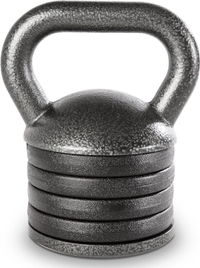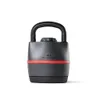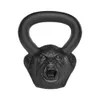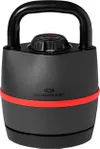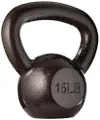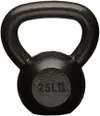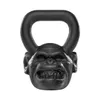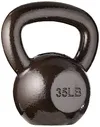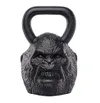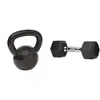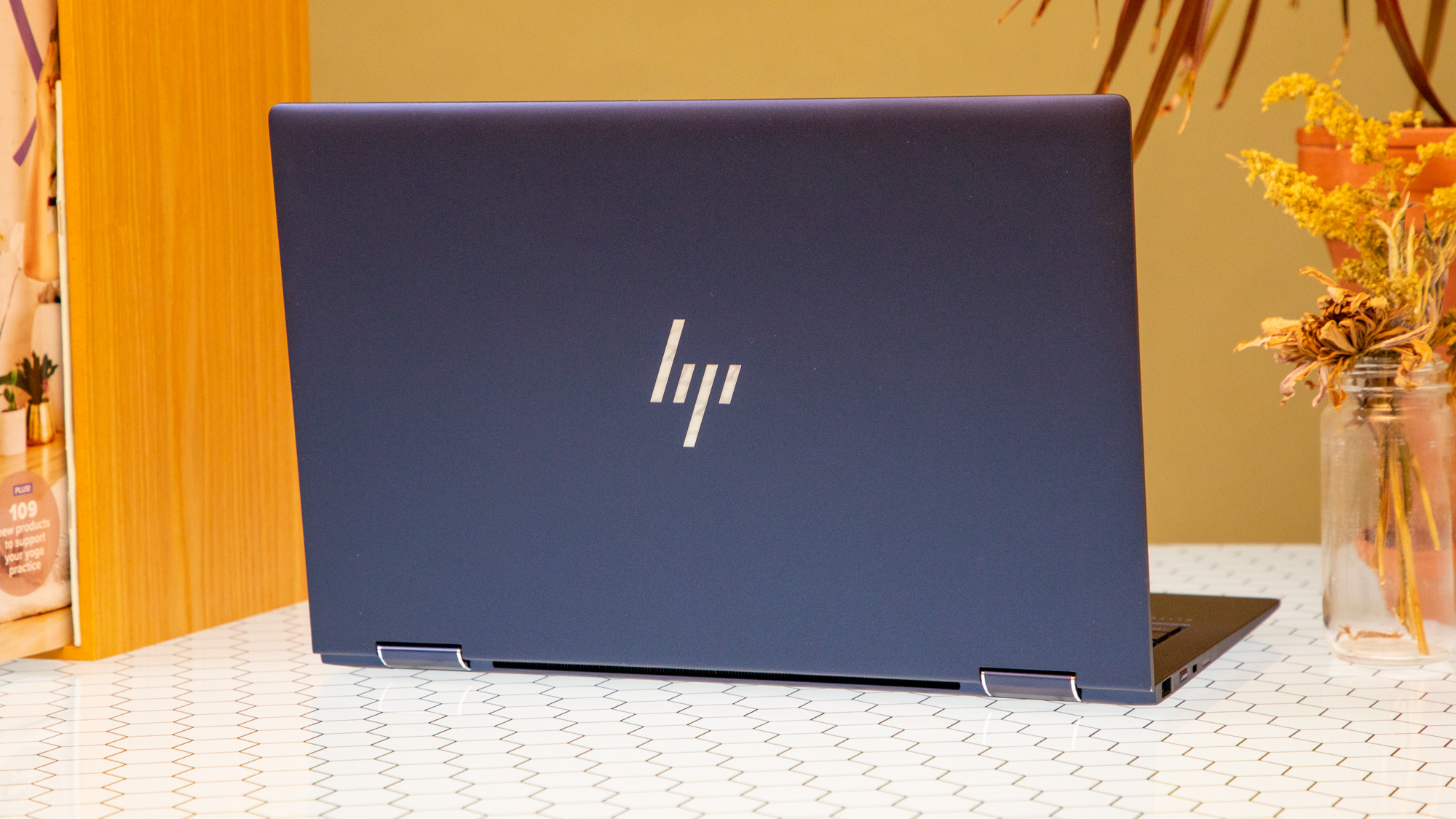Strength coach shares a 6-move workout to sculpt your core — and all you need is 1 kettlebell
Six moves away from strengthening your core
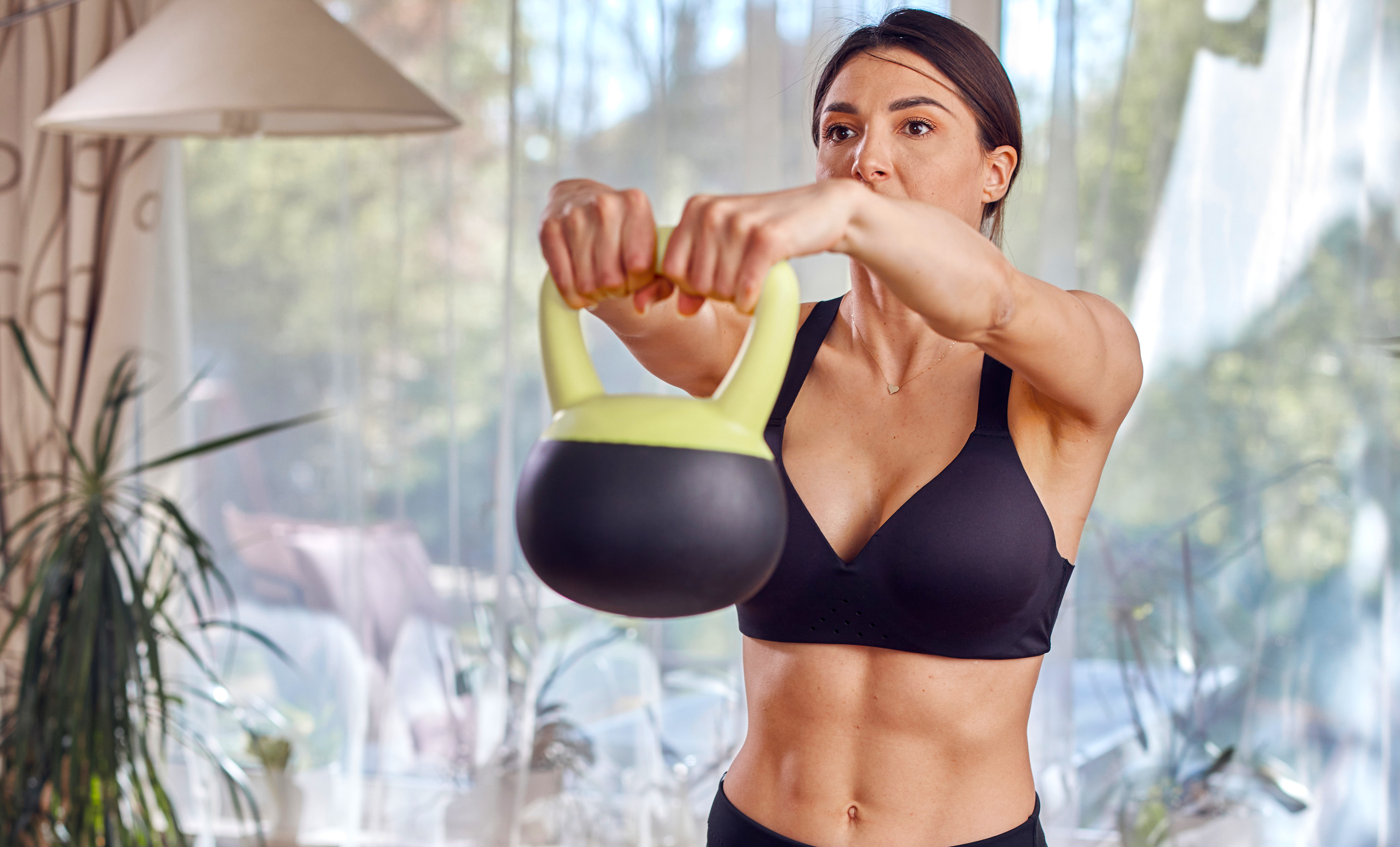
Want to know what it takes to build a rock-solid core? We recently had the opportunity to learn from an experienced strength and conditioning coach Teddy Savage. The routine involves working with one of the best kettlebells and six exercises to sculpt your midsection while improving your overall strength and stability.
Not only does a strong core look impressive, but it also significantly helps you out in other exercises like improving your running form and supporting your body during weightlifting movements by providing stability, better posture and power.
Let's see what Savage had to say on the power of the core before walking us through his kettlebell routine below.
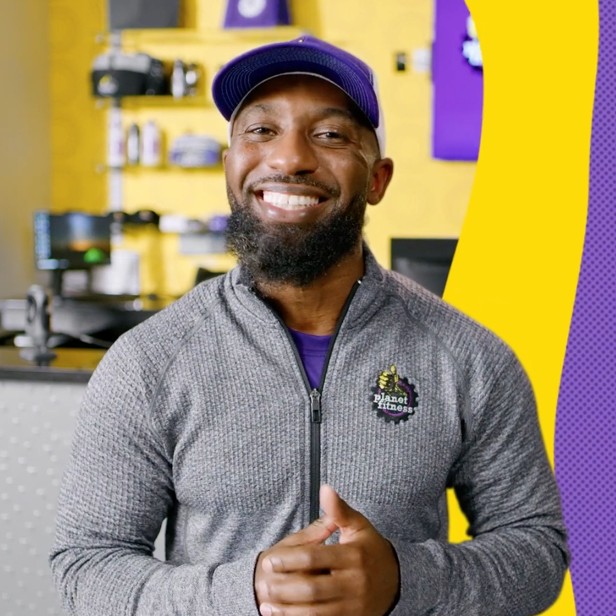
Teddy Savage, certified personal trainer (CPT), is the National Lead Trainer at Planet Fitness. Teddy has always been heavily involved in the sports industry. During his career, he served as the Strength & Conditioning Coach for the Tri-City Dust Devils Select baseball team in Houston, Texas, where he helped secure multiple national tournament titles.
What is the core and why do we train it?
“Let’s talk about the core. And yes, the WHOLE core and not just the 6-pack abs,” says Savage. While many of us envision toned abs as the hallmark of a strong core, Savage reminds us that it's much more than that. The core includes the abdominal chain, internal and external obliques, lower back muscles, and the transverse abdominis, all of which play vital roles in bending, hinging, rotating, and stabilizing the body.
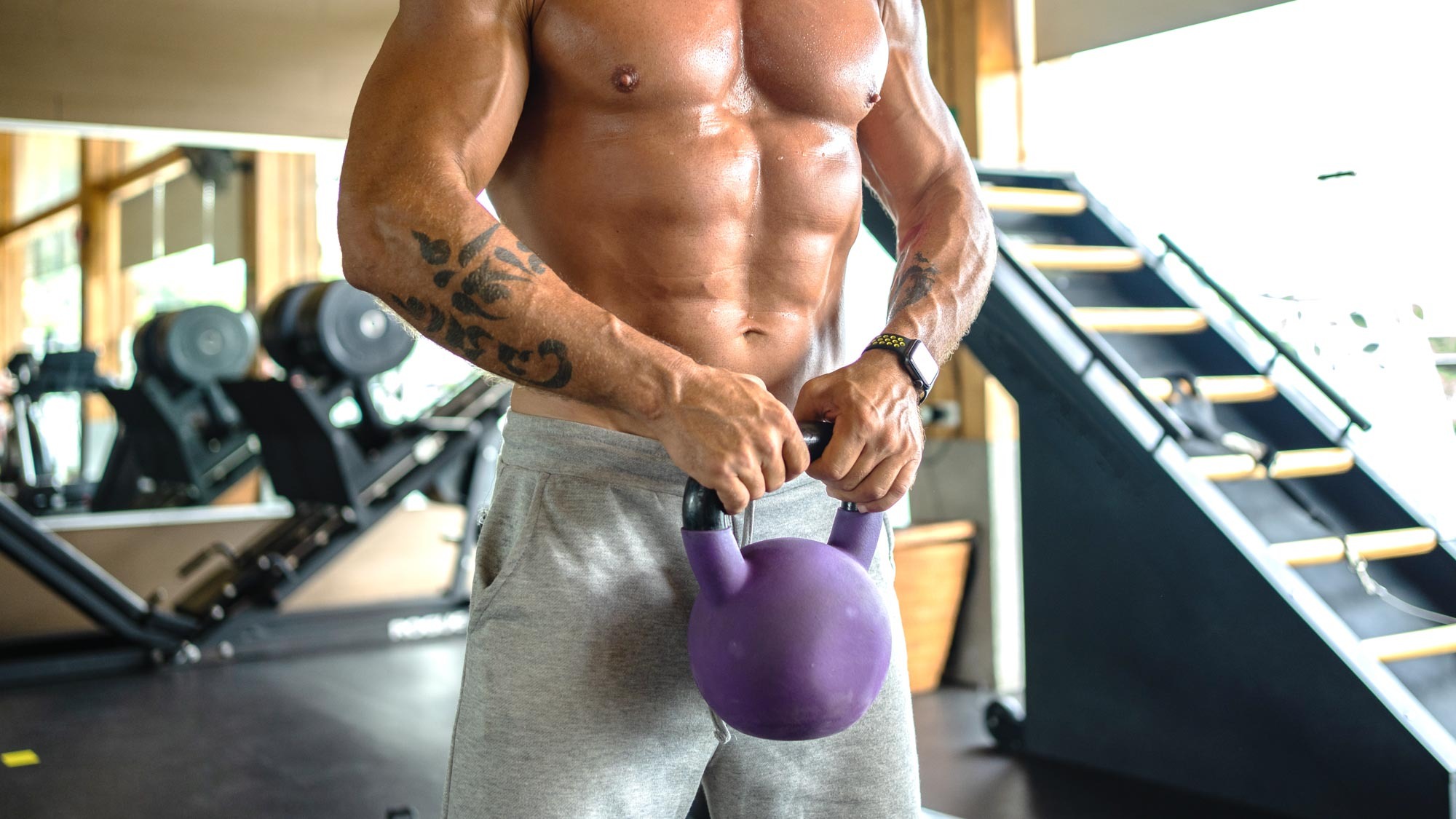
“The obliques are essential for allowing the spine to rotate and promote proper stability through the trunk,” Savage explains, while the lower back muscles maintain proper posture by keeping the spine upright.
He also highlights that the transverse abdominis, the deepest core muscle, not only helps with overall stability but also protects your organs. “Truthfully, you’re working your core muscles throughout the day even though you may not know it,” Savage says. Everyday activities like walking, sitting, twisting, and reaching all engage these muscles.
With Savage's kettlebell core workout included in your fitness regime, you'll target these essential muscles and enhance your functional strength and stability.
Sign up to get the BEST of Tom's Guide direct to your inbox.
Get instant access to breaking news, the hottest reviews, great deals and helpful tips.
What is the kettlebell core workout?
The workout is suitable for beginners and seasoned kettlebell users but before you start, keep in mind this routine might not be suitable for those with back injuries, so it’s important to check with a doctor or physio first.
Additionally, if you’re new to training with weights and kettlebells, make sure to read our advice on how to hold a kettlebell properly, and don’t hesitate to ask someone more experienced for guidance.
Apex adjustable kettlebell: was $69 now $50 @ Amazon
Save 27% on the Apex range. We think this is a brilliant price for an adjustable kettlebell, as you can adjust the weight between 20 to 50 pounds simply by replacing the removable spacer disks with the standard weight plates. The sturdy bottom also makes the bell suitable for floor-based exercises, which we recommend.
Kettlebell march
- Start with your feet about hip width apart and the Kettlebell (KB) in one hand extended above your head.
- While maintaining proud posture with your chest up, shoulders back, and chin forward, start marching at a moderate pace by bringing one leg up towards your chest and then repeating with the opposite leg.
- Be mindful to keep your core engaged throughout by tying an imaginary string from your belly button to your spinal cord.
Why this is good for the core: This is a dynamic exercise that focuses on overall core stability with an emphasis on lower ab engagement. Keeping the kettlebell suspended high above your head while maintaining a proud posture, forces you to use internal stabilizers that are critical to the core. Additionally, the marching aspect of the exercise allows you to engage lower ab muscles responsible for helping to drive the knees upward.
What weight is a good weight: For this move you don’t want to go heavy. Instead, opt for a lighter to moderate weight kettlebell that’s challenging yet easy enough to keep above your head for the desired time interval.
Kettlebell Woodchoppers
- Start with your feet slightly more than shoulder width apart and holding the kettlebell by the handle at about chest height.
- Drop the weight down to just outside your left knee and sink your hips slightly, while pivoting on your right foot allowing your heel to leave the ground but the ball of your foot to remain in contact with the ground.
- Drive through the heel on your left foot and rotate the weight from the outer knee position, up towards your right shoulder, allowing your eyes, shoulders, and chest to follow the kettlebell to full extension.
- Repeat by following the same sequence but to the opposite side.
Why this is good for the core: This is a functional core movement. Meaning that the exercise itself mimics movements we perform in our everyday lives. There are plenty of times when we must rotate our body from left to right and maneuver in different planes of space. This exercise allows you to engage the inner and outer obliques, along with the lower back and abs to create that rotational force and help strengthen the muscles that stabilize the spine.
What weight is a good weight: With this functional movement working so many muscles in concert, you can challenge yourself to go a little heavier. However, don’t overdo it and compromise your form and ability to control the weight throughout the exercise.
Kettlebell Swings
- Start with your feet slightly more than shoulder width apart and a slight flexion at the knee. Think of your hips as the fulcrum to a seesaw as the hips are the pivot point for this core exercise.
- While maintaining your lower body position, let the kettlebell swing between your legs by hinging at the hips and keeping a nice straight and neutral spine. Drive through your heels, hamstrings, and glutes to swing the kettlebell upwards until it reaches shoulder height and repeat.
- The objective is to maintain core engagement throughout the exercise while generating force from the lower half of the body, through your trunk, and even up to your shoulders.
Why this is good for the core: This movement is all about the posterior chain. That means it really works the muscles alongside the back of the body that are responsible for good posture. Muscles like the calves, hamstrings, glutes, and lower back. Those lower back muscles that strengthen your lower lumbar are some of the primary movers for this exercise, which makes it a perfect addition to any core routine.
What weight is a good weight: For this exercise, think challenging but not too cumbersome. You want your posterior chain and core muscles to really work, but you don’t want to strain your back by using a weight that provides too much of an external load.
Kettlebell Windmill
- Start with your feet about shoulder-width apart and a slight flex in the knees.
- While holding the kettlebell in your left hand, hoist the kettlebell up by the handle until you’ve reached full extension without locking out at the elbow joint.
- Then, take your right hand and slowly bring it down towards the floor and positioned to the inside of the right ankle. As you descend, slightly bend the right knee and rotate your torso to that your eye look towards the kettlebell and your right hand draws a straight line from the ground to the weight.
- Slowly, return to start and repeat.
Why this is good for the core: This core exercise is great for building core stability and improving hip mobility. It really fires off those internal stabilizers and obliques responsible for rotation and stabilization of the spine.
What weight is a good weight: Go lighter on this exercise because the aim is for slow and controlled movement and less about powering up a heavier weight. Make sure you can control your body through the mechanics from start to finish before you introduce the kettlebell into the equation.
Kettlebell Pull-through
- Start in an upright plank position with your hands located directly beneath your shoulders and your feet a little less than hip width apart for extra stability. The kettlebell should be just outside of either your right or left arm so that the handle is up and the kettlebell is securely at rest.
- From this position, tighten your core and squeeze the glutes as you reach your hand through and underneath of your body to grab and drag the kettlebell across until it is positioned on the opposite side of where it started.
- Repeat by dragging it back to the starting position and continue for your desire number of reps or time.
Why this is good for the core: This move is both isometric and dynamic. Meaning that your core is working to keep you in a strong and stable position, but also working different muscles that allow you to move the kettlebell from one side to the other. This movement incorporates all the muscles in the abdominal chain, the obliques, and the lower lumbar that stabilize the spine and hips.
What weight is a good weight: For this exercise, you can go for a moderate to light-heavy kettlebell because you’re not lifting the weight, but instead pulling it across the ground. Keep in mind that you’ll also be battling the friction of the floor surface along with the weight of the kettlebell!
Kettlebell Hollow Hold to Russian Twists
- Start on your mat in a seated position with your legs bent at a 90-degree angle, your heels down, and your toes pointed up.
- Hold the kettlebell by the weighted end in both hands, with your arms fully extended up and the kettlebell above your chest and midsection.
- Lean back slightly into the hollow hold creating a slight curve of the spine and allowing your bellybutton to sink inwards towards your spine.
- Hold for time, and then rotate the weight down towards your left hip, rotating your chest with the weight and slowly repeat by rotating to the opposite side.
Why this is good for the core: This one hits everything from the transverse to the abs, to the obliques, and even the lower back. The hollow hold allows all the muscles to work together as an isometric component to the exercise, then when you add the Russian twists, you invite the obliques to the party to assist with rotating about the midline of the body.
What weight is a good weight: This one is truly about preference because this exercise done with just body weight can be challenging enough. So, start light and as you build your confidence with the movement and resistance, gradually increase in weight.
More from Tom's Guide
- Forget pull-ups — you just need a set of kettlebells and these 5 exercises to sculpt your back and biceps
- Ditch sit-ups — you just need a resistance band and these 5 exercises to build a stronger core
- 7 best kettlebell ab exercises for strengthening your core muscles

Jessica has been a fitness writer at Tom’s Guide since 2023, bringing three years of experience writing about health, fitness, and the great outdoors. Her passion for exercise began during her childhood, where she spent weekends hiking and competing in local athletics club events. After earning a master’s degree in journalism from Cardiff University, Jessica found the perfect way to combine her love of storytelling and fitness into a career.
Jessica is passionate about testing fitness gear and tech, using her reviews to help readers make informed buying decisions. She ran her first marathon in April 2024, finishing it in 3 hours and 48 minutes. Through her training, she’s developed a deep understanding of what it takes to grow as a runner, from effective workouts and recovery techniques to selecting the right gear for every challenge.
When she’s not at her desk, Jessica enjoys spending time in the kitchen crafting new recipes, braving cold water swims and hiking.
